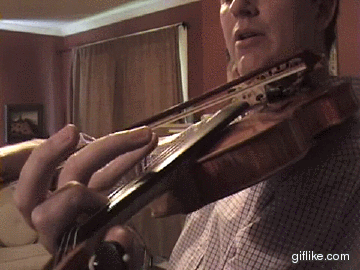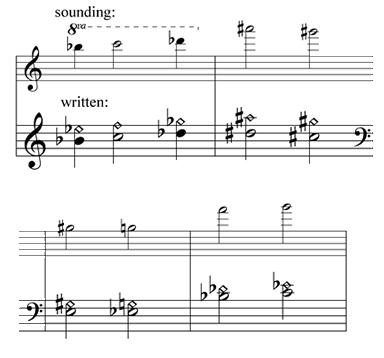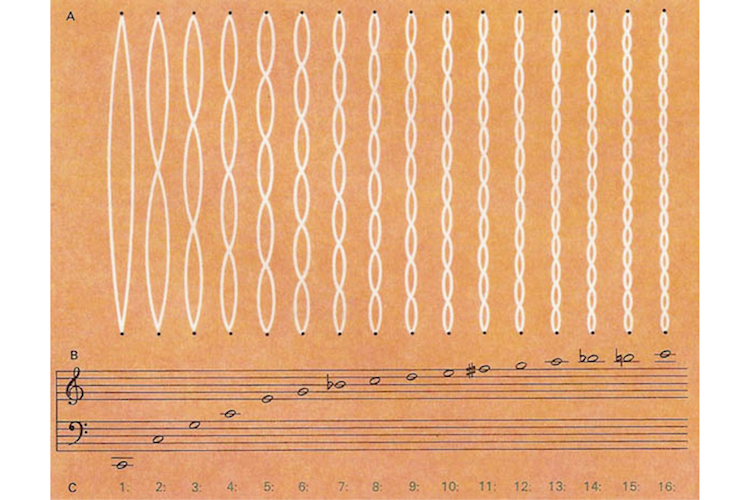+ Ryan Lott (of Son Lux) teaches how to build custom virtual instruments for sound design and scoring in Designing Sample-Based Instruments.
I have played stringed instruments for my entire musical career — namely, the electric bass, then the upright bass, closely followed by acoustic and electric guitars.
From my upbringing, string harmonics were primarily a way to tune an instrument (the fifth-fret harmonic of a string being the same pitch as the seventh-fret harmonic of the next string higher), and a nice, airy, shimmering timbre in contrast to the dark, warm tone of the bass notes. I didn’t think much of them beyond that.
Later I learned about their potential as an expressive device by using the limited natural harmonics available, as made famous by the inimitable Jaco Pastorius. That said, I never immersed myself fully enough to find out how each individual note was performed in some of his works.
It wasn’t until much later in my musical career and schooling that I considered the potential for string harmonics as a compositional tool. After all, they were limited to whatever notes you could get out of a string’s natural overtones — or so I thought.

How to Sound a Harmonic
How does one actually sound a harmonic on a stringed instrument? Basically, if a finger is placed (not pressed) onto a particular node on a string at a mathematically relevant position (i.e., where your finger divides the string into two, into three, etc.), one of the naturally occurring overtones of the root note of that string will sound, instead of that root note.

The note in the overtone series that sounds corresponds to the division of the string. That is, dividing the string in half gives you the second overtone (an octave), dividing in thirds gives you the third overtone (an octave and a fifth, or a twelfth), dividing the string in fourths gives you the fourth overtone (two octaves up — remember this one for later), and so on.
At some point I delved into Jaco’s “Portrait of Tracy”, and realized that the D# harmonic at the end of the first phrase of the melody simply wasn’t possible with natural string harmonics, and there had to be some other way of performing it.
Artificial String Harmonics
Luckily, my nerdy bass teachers and classmates at Berklee knew all the cool tricks, and they showed me just how one performs this artificial harmonic. Basically, the principle of harmonics can be moved around the fingerboard by pressing the string down on the fretboard and placing a finger at a relevant place above that “fretted” (pressed) note.

Since the simplest harmonic to find is generally the octave above, I had a lot of fun finding ways of incorporating that particular artificial harmonic into my playing, including using it as a textural tool for melody much in the way Jaco did, but also as a tool for orchestration, or using the sound of these harmonics to layer with, or on top of, other sounds.
But that was just octaves, and that was just electric bass. Which got me thinking… what other roles throughout history have string harmonics played, and how could I use them for my own compositions and arrangements? (Here is an in-depth overview of the use of string harmonics throughout Western music, especially in the music of French composer Maurice Ravel.)
Around that same time I had an opportunity to explore just that. I began assisting composer Bryan Senti on his most ambitious score to date — Michael Almereyda’s Experimenter, a film about the 1961 Milgram experiment on obedience that observed people’s tendencies to either follow orders or reject them. String harmonics abound in this score, and from a technical standpoint, I learned something I never knew before about orchestral string performance of artificial harmonics — there is a very particular way to play them, and therefore also a very particular way to write them.
The most common type of artificial harmonic is widely known as the “touch-fourth” harmonic, and is so named because it is produced by placing a finger (usually the pinky) a fourth above the fretted note, which produces a note two octaves above the fretted note. As explained by Samuel Adler:
“The node a fourth above the stopped pitch has been found to be most practical, and it is suggested that this manner of securing artificial harmonics be adopted for orchestral performance.” [Adler, p. 50]
And so it was, Mr. Adler. There’s also a standard way (today) to notate such touch-fourth harmonics, constituting a standard written note to indicate the fretted note, with a diamond note a fourth above it on the same stem indicating the stopped node (which sounds two octaves above the fretted pitch).

What Can You Do With String Harmonics?
Musically, a previously obscure fact suddenly became seemingly obvious through working on the score — string harmonics in an ensemble setting are really creepy sounding. Senti, an accomplished violinist and string arranger, knew this very well first-hand in approaching the score for Experimenter.
Soon after this revelatory project, I began a score of my own — the soundtrack for the weird and wonderful paranormal podcast Limetown. The scripts of the show contain a naturally eerie disposition and, fresh off an equally haunting score project, I decided to carry the ethereal, ghostly timbre of these artificial string harmonics on to new frontiers. This isn’t to say that this is the only use for string harmonics, especially artificial ones. They simply happen to have a distant, vocal quality that could be read equally as eerie, melancholy, hopeful, or elated, depending upon the context.
With Experimenter, we were lucky to record some incredible NYC players at one of the top studios in the world. Fortunately for Limetown (working without a movie budget), the 21st century affords me a luxury the likes of which Ravel did not have — sample libraries.

Having already gone through the process of harmonic-math to find all the right notes and the right positions for the Experimenter players to play the correct parts (and having to correct some of them in-session, fast and under pressure), I was very thankful not to have to think quite so hard about the notes on my new project, and to have access to infinite “players” and “studio time” to work with.
Although harmonics can be a bit more difficult than standard orchestrating, they can absolutely be worth the extra effort to deliver far greater emotional impact.
String harmonics aren’t anything new in the string instrument world — especially among violinists and violists — and are much more common than I’d realized, being a bassist. They’re generally just considered too difficult for bassists to reach, and sometimes the same is true of cellists, depending upon the writing. Again, from Adler:
“Double bass artificial harmonics are not recommended, even though some contemporary composers have called for them in solo music.” [Adler, p. 50]
Though he specifically mentions double bass here, he’s referencing solo works for both acoustic and electric bass, as in Jaco’s work. In fact, this is exactly how Jaco achieves the D# harmonic so crucial to his melody in “Portrait” (through a touch-third, rather than the touch-fourth mentioned previously) — one of his many virtuosic feats.
Still, despite many such popular examples of harmonics, most musicians remain unaware or simply baffled by their execution or worth to a composer — and from what I’ve seen, they can be worth a whole lot.
So start playing around!
Don’t stop here!
Continue learning with hundreds of lessons on songwriting, mixing, recording and production, composing, beat making, and more on Soundfly, with artist-led courses by Kimbra, Com Truise, Jlin, Kiefer, and the new Ryan Lott: Designing Sample-Based Instruments.




